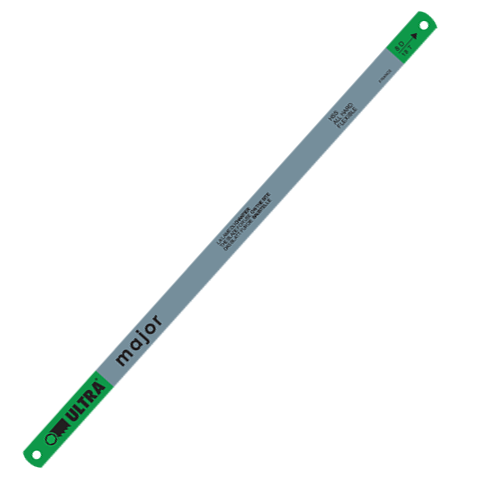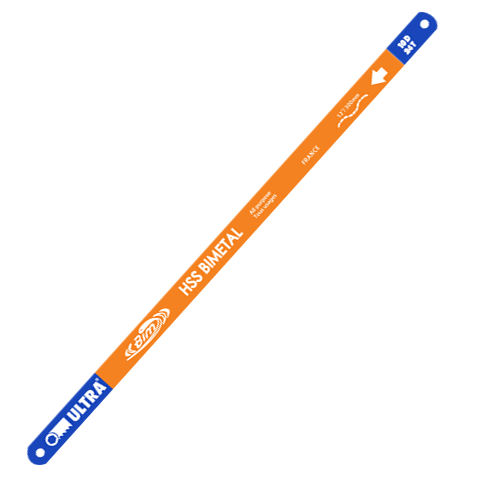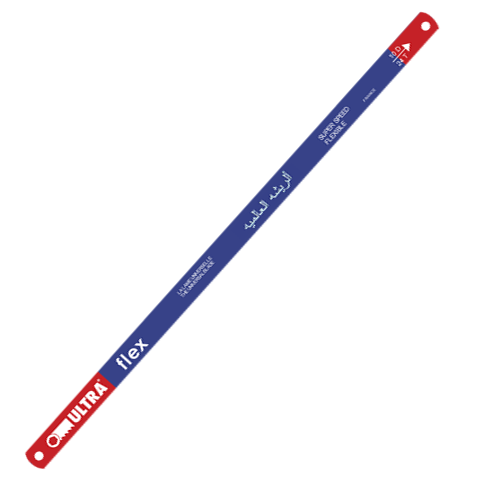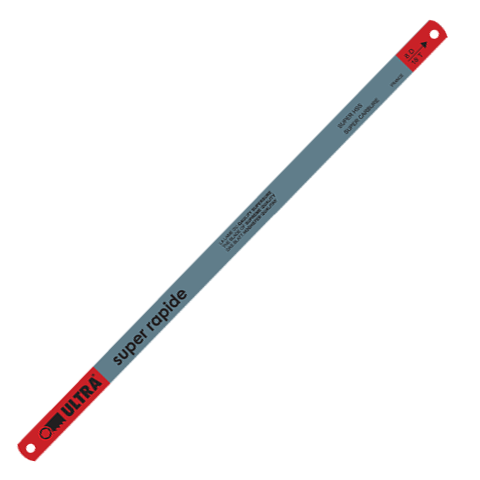-
La qualité de la lame / The Blade's quality
ULTRA® RECORD - SUPER RAPIDE : Acier haut débit Lame dure conçue pour optimiser les performances dable et aciers alliés). Elle combine performance et résistance. Particulièrement utile pour les profes-sionnels, notamment pour la maintenance.
ULTRA® BI-HARD - BIM - TRILENIUM : Inox et alliage. Recommandée pour tous types d'utilisateurs, cette matériaux, particulièrement à l'acier inoxydable.
ULTRA® RECORD - SUPER RAPIDE : Hard and special steel. Made to optimize our cutting's performances with tougher materials. For professional users, this blade with major performance and resistance, focus especially in the maintenance work.
ULTRA® BI-HARD - BIM - TRILENIUM : Stainless steel and steel alloyed. For all the users, these blade with a high flexibility is useful for all materials, especially stainless steel.
-
La denture / The teething
Leprofil : ULTRA a développé un profil de grande precision pour la denture de ses lames mains, assurant ainsi un mordant exceptionnel.
Le pas : Il indique le nombre de dents pour une longueur donnée en cm ou en pouce.
Le choix de la denture : Ce choix dépend du matériau à couper. hacksaw blades to ensure a unique bite and a perfect cut.
Tooth form : ULTRA®has developd a very fine teeth form for its Hacksaw blades to ensure a unique bite and a perfect cut.
Pitch : The pitch of the teeth indicates the number of teeth per inch.
Tooth selection : Tooth selection is driven by the type of material to be cut.
Pas / Pitch Denture / Teething Utilisation / Use 0,8 mm 12 D - 32 T Tubes minces et petites pièces
Thin tubes and small profiles1 mm 10 D - 24 T Tubes et pièces de 2 mm d'épaisseur minimum
Tubes and profiles of minimum 2mm thickness1,4 mm 8 D - 18 T Métaux ferreux, laiton doux de plus de 4 mm d'épaisseur
Ferrous metals, soft brass of more than 4mm thickness1,8 / 2 mm 6 D - 14 T Metaux depaisseur suffisants (>5mm) et relativement souple comme l'aluminium et ses alliages, cuivre, acier...
Metals of sufficient thickness (>5mm) and relatively soft as the aluminium and its alloys, copper, steel... -
La trempe / The quench hardening
C'est ('operation du traitement thermique qui consiste a modifier la structure de I'acier pour le durcir.
La trempe totale : L'ensemble de Ia lame, dos, corps et denture, est durci. Elle permet d'obtenir une lame extrennement dure et rigide, assurant un excellent guidage dans Ia coupe.
La trempe etagee : Traitement thermique different sur le dos, le corps et la denture. On obtient une durete fonctionnelle pour chacune des zones de la lame:
- Durete maximale sur la pointe des dents
- Durete recluite sur le corps pour une lame Incas-sable et flexible
- Durete accrue sur le dos pour obtenir du nerf et de la rigidite
La trempe BIM : L'ensemble de la lame est trempee. Ce traitement permet une forte durete de la dent en acier HSS et une bonne resistance du dos de la lame tout en conservant une excellente elasticite.
It is a mechanical process that alters the structure of steel to create a harder material.
Total quenching : The whole blade including the teeth, body and back are hardened. This process gives an extremely hard and rigid blade, ensuring a perfect guiding during cutting process.
Staged quenching : The heat treatment is focused on different sections of the blade which gives a functional hardness for each part of the blade:
- Maximum hardness on the teeth for a perfect cut
- Medium hardness maintains flexibility and avoids distorsion
- Good hardness on the back edge gives both longer life and rigidity
BIM quenching : The blade is fully hardened and the combination with the bi-metal material gives a very strong hardness on the cutting edge with a smooth body. The results provide a flexible body as well as an exceptional longevity of the blade.
TREMPE TOTALE / ALL HARD HSS Super HSS Flexibilite / Flexibility 


Durete / Hardness 





Longevite / Durability 






TREMPE ETAGEE/ STAGED HSS Super HSS Flexibilite / Flexibility 






Durete / Hardness 



Longevite / Durability 




TREMPE BIM / HARD BIM HSS Super HSS Flexibilite / Flexibility 


Durete / Hardness 

Longevite / Durability 




-
L'avoyage / The Setting
C'est l'écartement latéral des dents qui permet à la Is the lateral teeth clearance, known as the setting lame de faire son chemin dans le matériau sans that creates a cut and prevents the teeth from any coincer.
Is the lateral teeth clearance, known as the setting that creates a cut and prevents the teeth from any binding in the material.
L'avoyage Raker/ Raker Setting : Copeaux enleves sur un cycle de 3 dents. Chips removed in a cycle of 3 teeth

Agressivite / Agressiveness 
Rapidite / Speed 

Precision 



Confort / Easy USE 


L'avoyage Ondule / Wavy Setting : Copeaux enlevés sur un cycle de 12 dents. Chips removed in a cycle of 12 teeth

Agressivite / Agressiveness 
Rapidite / Speed 

Precision 


Confort / Easy USE 



L'avoyage TDA / TDA Setting : Copeaux enlevés sur un cycle de 2 dents. Chips removed in a cycle of 2 teeth

Agressivite / Agressiveness 



Rapidite / Speed 



Precision 

Confort / Easy USE 

Lames Mains / Hacksaw Blades
TRADEMARKS
All the brands mentioned in the catalog are registered and protected trademarks. Without authorization of the company, names of products, logos, or other representations cannot be copied for commercial or reproduction purposes.









